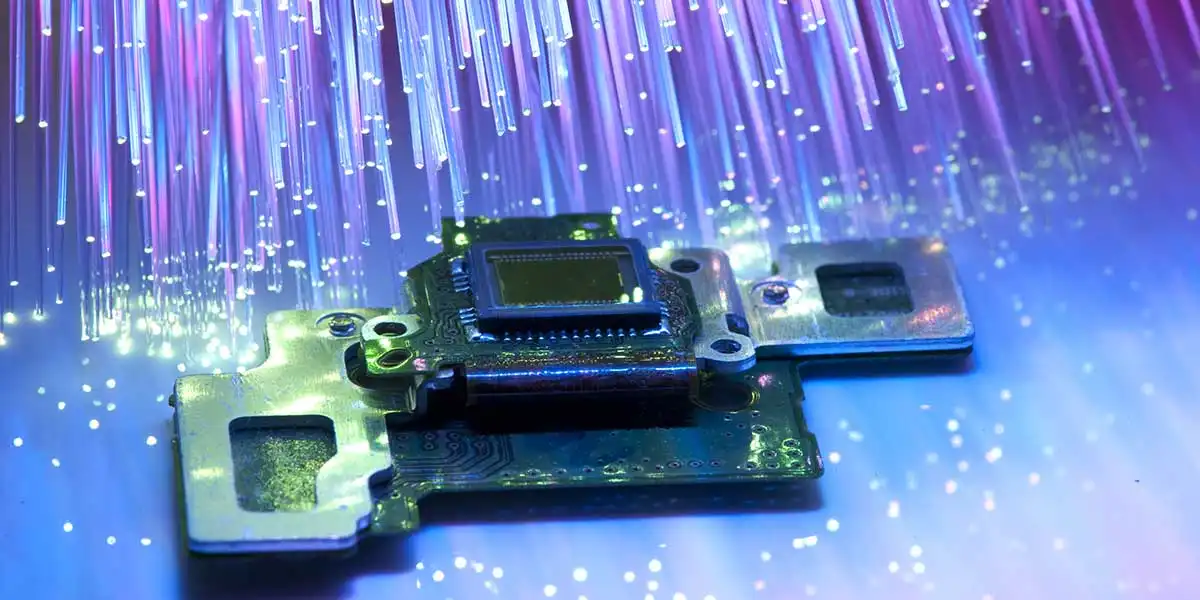
Jul 30, 2024
Blog Digital World 7 Key Insights into the Fiber Optic Sensor Market
Fiber optic sensors are devices that use optical fibers to detect and measure changes in light properties, like intensity, phase, wavelength, or polarization. These sensors are renowned for their accuracy, sensitivity, and ability to operate in harsh environments. By transmitting light through optical fibers, a variety of parameters can be monitored, including temperature, pressure, strain, and chemical concentrations.
Here, we’ll dive into fiber optic sensors, covering their market trends, applications, regional dynamics, and leading industry players.
Fiber optic sensors have revolutionized the way we monitor and control systems across various industries. Their importance stems from several key advantages:
The fiber optic sensor market is experiencing a significant upswing. Valued at $3.2 billion in 2023, it is anticipated to grow to $3.5 billion in 2024 and reach an impressive $5.5 billion by 2029, at a compound annual growth rate (CAGR) of 9.5%.

The global market for fiber optic sensors was valued at $3.2 billion in 2023. The market is anticipated to grow from $3.5 billion in 2024 to $5.5 billion by 2029, at a compound annual growth rate (CAGR) of 9.5% from 2024 to 2029.
Fiber optic sensors are versatile, finding applications across various sectors:
Yokogawa Electric Corporation is a Japanese multinational that specializes in industrial automation and control. Their fiber optic sensors, which include DTS systems, optical spectrum analyzers, and optical time domain reflectometers (OTDR), are used for real-time monitoring in industries such as oil and gas and power generation. Operating in over 60 countries, Yokogawa is known for high accuracy and reliability in harsh environments.
Banner Engineering is an American company that specializes in industrial automation. Their offerings include fiber optic sensors such as amplifiers and assemblies. With operations in over 50 countries, Banner's sensors are versatile and easy to integrate, making them ideal for manufacturing processes.
Omron Corporation is a Japanese multinational company that specializes in automation, sensing, and control technologies. It offers advanced automation systems and fiber optic sensors used in factory automation and robotics. Operating in over 130 countries, Omron's sensors are known for high precision and reliability.
Luna Innovations provides fiber optic sensing solutions for aerospace, automotive, energy, and industrial markets. Their offerings include distributed sensing systems and optical frequency domain reflectometry (OFDR) systems. Luna Innovations is recognized for its advanced sensing technologies and operates in multiple countries across North America, Europe, and Asia.
Amphenol Corporation is a US-based global leader in interconnect and sensor technologies. They provide a wide range of fiber optic connectors, cable assemblies, and fiber optic sensing solutions used in aerospace, automotive, industrial, and telecommunications applications. Amphenol operates in over 40 countries and is recognized for its innovative technologies and high-quality products.
The fiber optic sensor market faces challenges such as high initial costs, technical complexity, sensitivity to physical damage, and competition from alternative technologies. However, there are significant opportunities, including growing demand in telecommunications, technological advancements, increased adoption in smart infrastructure, environmental monitoring, and industrial automation. Supportive government policies and funding for smart infrastructure projects contribute to market growth, presenting a balanced outlook for the future.
In summary, the fiber optic sensors market is rapidly growing due to its precision and versatility across industries. As technology advances and demand rises, these sensors will be crucial for modern infrastructure. Leading companies such as Yokogawa and Amphenol are driving innovation, positioning the market for continued growth despite challenges. The future of fiber optic sensors looks promising as they increasingly transform how we monitor and manage systems in a connected world.

Karishma Arora is an Assistant Team Lead in Marketing Operations at BCC Research, with a master's degree in commerce. She is a passionate marketer with a knack for creativity and data-driven strategies.

From smartphones to satellites, antennas play a vital role in enabling the seaml...

Introduction Artificial Intelligence (AI) and the Internet of Things (IoT) are r...

We are your trusted research partner, providing actionable insights and custom consulting across life sciences, advanced materials, and technology. Allow BCC Research to nurture your smartest business decisions today, tomorrow, and beyond.
Contact UsBCC Research provides objective, unbiased measurement and assessment of market opportunities with detailed market research reports. Our experienced industry analysts assess growth opportunities, market sizing, technologies, applications, supply chains and companies with the singular goal of helping you make informed business decisions, free of noise and hype.